When we are interested in poultry farming and raising hens to obtain a good egg yield, it is essential to choose certain breeds of hens for laying eggs that have a very high egg-laying index. Otherwise, it will be a waste of resources such as feed, space, and time. In this article, we tell you which are the best chickens for eggs and how to quickly start enjoying this venture that you can start in your backyard and scale up to have an egg-selling business.
Before we begin, let’s make a brief explanation of the terms we will use to better orient the reader. Although it is very common to say “chickens for eggs” since the one that lays the eggs is the chicken female, we will refer to this as “hens”, and we will differentiate between laying hens, meat hens, dual purpose hens (eggs and meat), incubator hens, and ornamental hens (although they lay eggs, the rate is very low, they can also incubate).
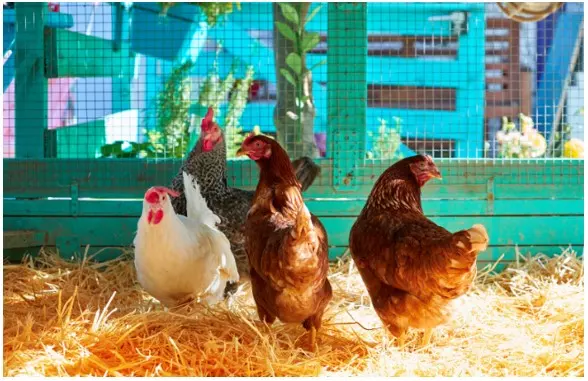
Table of Contents
What is the Best Laying Hen?
Choosing the best hen for laying eggs when considering to start with poultry farming is not difficult but depends on many factors: your purpose, space available, weather, location, and budget. In the following paragraphs, you have the tips to choose between hens breed to choose the best hen for eggs for you.
Let’s start!
Selecting and purchasing the right laying hen breeds is the key to having a high quantity of eggs always available. You will find that some types of hens are recommended for those families who are looking for a self-sufficient egg supply. Without giving up beautiful and colorful hens.
These chickens for eggs are perfect for families who want to add fresh, high-quality eggs to their diet. In addition, their ease of maintenance makes them ideal for both the experienced and those just starting.
Laying hens are very easy to raise and maintain, due to their great hardiness. So they are ideal for both experienced people and those who want to get started in poultry farming. So if you are one of those people who are wondering why have eggs gotten so expensive and decided to start raising 1 or more laying hens, in the following paragraphs we explain to you which are the best egg-laying chickens for beginners (and not-so-beginners).
For those who have had farm experience with some animals or even raised chickens for meat, laying hens requires no more care than other animals, and in fact, it is quite simple.
The essential things a laying hen needs are food, water, and shelter. They are quite simple to raise and care for. So let’s encourage even beginners who are looking for information to start raising hens for eggs because you will see that it is very simple and you will get a lot of satisfaction from the quick results.
- Laying hens begin laying eggs at 6 months of age.
- In addition, with species-specific laying hens, you will achieve very high laying rates ranging from 260 to 320 eggs per year, depending on the variety you choose.
- The size and color of the egg will also vary depending on the modality you choose.
- In general, the best-laying hens do not incubate their eggs, as they are more inclined to feed and lay eggs naturally than to incubate them.
Generally speaking, 80 to 90 percent is regarded as outstanding egg production (100 percent = 1 egg per hen per day). However, the breed, housing, weather, management, parasite load, and diet of your chickens can all affect how quickly they lay their eggs. If you don’t provide additional light to get a continuous 16 hours of light each day in the autumn and winter, most chickens will naturally slow down.
How Long Do Chickens Lay Eggs?
Most laying hens reach their peak output about 30 weeks during their first year of life.
The initial eggs will probably be smaller, but they will get bigger over time. Egg size will even out and egg production will progressively decline as your birds become older. You may assume that a hen will lay around 80% as many eggs at about 2 years old as she did at 1 year. Hence, if your hen produces 250-300 eggs in her first year, you may anticipate that she will produce 200-250 eggs in her second year under perfect circumstances.
You may anticipate that your hen will produce around 60% of the first year’s yield in her fourth year of laying and just under 70% of it in her third year of laying.
Hens have a long lifespan even after they cease producing eggs. Hens naturally begin to produce fewer eggs as they become older, with many chickens slowing down production at 6 or 7 years old and retiring soon after. With an average lifespan of between 8 and 10 years, many laying hens may live well into their golden years.
Do You Want White, Brown, Or Other Colored Eggs?
If you are looking for eggs of a certain color, you will have to choose a certain breed of laying hen.
For those looking to get started with limited space, consider that in general, hens that lay brown eggs are larger than hens that lay white eggs. Therefore, hens that lay brown eggs eat slightly more feed than hens that lay white eggs (which are more economical). If your space is limited and you want brown eggs, easy to handle, and hens with high laying rates you can choose a suitable breed from the list below, as the following paragraphs will show you the best hens for laying eggs.
Do You Need A Rooster For Hens To Lay Eggs?
Before checking out the list of the best hens for laying eggs, let’s answer one of the most common questions beginners may have.
If you are a farming beginner you may be asking “Do I Need A Rooster For Hens To Lay Eggs?”. No, you don’t need a rooster. The egg of a hen is a reproductive structure that is produced by female chickens. Hens can lay eggs without a rooster, therefore you don’t need one. Even without a rooster around, hens will still lay eggs. Even if the hen incubates the egg it won’t develop into chicks if the egg was not previously fertilized by a rooster. So, if you are interested in just having eggs for eating, you do not need a rooster.
Since egg-laying is a normal aspect of hens’ reproductive cycles, they will continue to lay eggs whether or not there is a rooster around. In general, hens produce eggs every 24 to 26 hours, whether or not a rooster is present to fertilize the eggs.
Now, let’s move to the best breed hens for eggs, plus some recommendations if you are looking for the best hens for eggs and meat and cold weather.
#1 Best Hens For Laying Eggs: Isa Brown – Brown Eggs 320/Year – 65 gr
One of the best Hens For Laying Eggs is the Isa Brown laying hen. This hen has a great ability to adapt to all types of climates. Therefore, Isa brown is one of the best chickens for eggs and cold weather.
In addition, their hardiness makes them unique and their high level of egg production makes them one of the most demanded in the sector, with about 320 eggs per year.
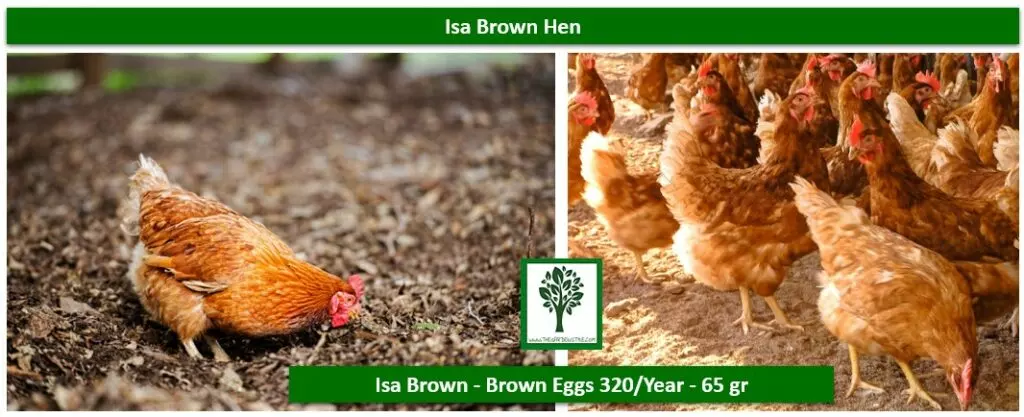
Their feathers are copper-colored and the weight of the Isa Brown hen is usually around 2 kilos. If we talk about the characteristics of their eggs, we must emphasize their high productivity and an average weight of about 65 grams.
Isa Brown’s breed of laying hens is excellent for small farms, as their high laying volume makes them very profitable.
The Isa Brown hen is one of the best-laying hens. This hen acquires an adult weight of about 2 kilos 200 grams and is capable of laying around 320 eggs per year with an average weight of 65 grams. The taste and quality of its eggs together with its high productivity have undoubtedly made it one of the most demanded laying hens in the market.
The Isa Brown hen is not good at incubating their eggs, unlike the American dwarf hens, which is why they have the reputation of not being good mothers. They are very good as industrial laying hens, although they can also be adapted to an alternative breeding system.
Their eggs are brown and usually weigh around 65 grams. The weight and size of the eggs will grow as the hen reaches adulthood.
Its daily consumption is around 120 grams, but remember that it is a great laying hen that is capable of laying more than 300 eggs per year.
They are ideal for sustainable family and industrial use on a medium and large scale (for more than 40 years) due to their high productivity. Remember that it can also be raised in a family and alternative environment. In addition, it can adapt perfectly to all types of climates and environmental conditions.
If you are looking for medium to large white eggs, let’s see the next recommended hen for eggs.
#2 Best Hens For Laying Eggs: Leghorn – White Eggs 320/Year – 55-60 gr
The Leghorn hen is also one of the best hens for eggs. The Leghorn breed is a rather light type of hen, with a white color and a spectacular tail, very developed on the rooster and fan-shaped on the hen. It is undoubtedly a sign of beauty and an indication of good egg production.
The Leghorn hen is a bird with prominent breasts, horizontal carriage, and well-visible thighs. The color of its feathers is white although some of them may have some flashes or golden reflections in the breast plumage.
In the USA, breeders focused on the undoubted laying ability of the Leghorn breed, and the first Leghorn hens arrived in the United States from Europe around 1870. Breeders were dedicated to promoting the undoubted laying ability of the Leghorn breed, which was already considered the queen of layers at that time.
Unlike the eggs of the Isa Brown hen (brown, about 65 grams), the eggs of the Leghorn hen are white. The number of units that hens of this breed are capable of laying is around 320 eggs per year. Although some specimens can even exceed this number, with an average weight ranging from 55 grams to slightly more than 60 grams.
Another factor that makes the Leghorn hen on the list of the best hens for eggs is the excellent feed and laying ratio.
The Leghorn is an active breed that rarely incubates its eggs, just as we mentioned with Isa Brown hens. Leghorn egg-laying hens are very useful for small gardens or chicken coops and are well suited to confined environments.
Our next best hen for laying eggs is a hybrid laying hen between breeds of Great Britain and Italy, absolutely amazing producing high rates of tasty blue-green eggs. Let’s see.
#3 Best Laying Hens: Cream Legbar Hen – Bluish-Green Eggs 300/Year – 60 gr
The Cream Legbar hen is one of the best chickens for eggs and is so named because its feathers are cream-colored. What is striking about this hen for egg laying is the color of the eggs. The eggs of the Cream Legbar hen are green or bluish-green and weigh about 60 grams.
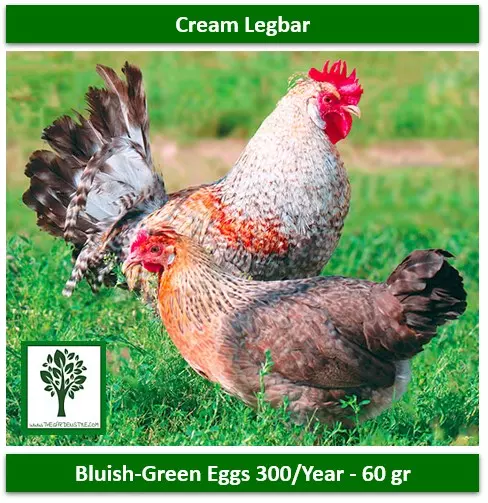
The Cream Legbar breed was obtained in Great Britain from a cross between the Araucana and the Livorno, originally from Italy (from which the Leghorn breed also originates).
It is a docile bird, resistant to climate variations including cold weather, and easy to handle. Females and males can be distinguished from young birds by the difference in the color of the plumage of the head.
The next hen of our recommended best hens for laying eggs is famous in the USA, even if egg-laying rates are not so good. Let’s see why the Plymouth Rock Hen is one of the favorite laying hens.
#4 Best Chickens for Eggs: Plymouth Rock Hen – Brown Eggs 280/Year – 60-65 gr
The Plymouth Rock hen is one of the best egg-laying hens we can recommend. Although the annual egg production of this laying hen is slightly less than the breeds mentioned above.
So, Why is it one of the best hens for eggs? Because Plymouth Rock has a very docile character, is not aggressive, and is ideal for keeping in the back of a house. If you want your children to enjoy this activity, this breed is ideal. Also, egg production is not too bad.
Their feathers are blackish with white stripes and the weight of the Plymouth Rock hen is usually around 2 kilos. If we talk about the characteristics of their eggs, we must emphasize their high productivity (although slightly lower than the previous ones) and an average weight of about 60 to 65 grams.
Plymouth Rock hens are excellent to start an egg business and to enjoy with the family, especially if there are small children because they have a very docile character.
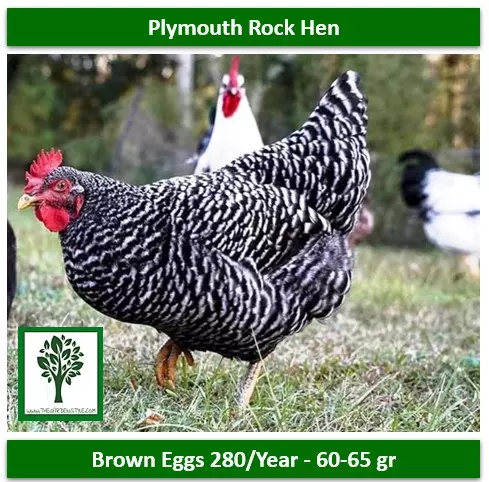
This hen is capable of laying around 280 eggs per year with an average weight of 60 to 65 grams. The flavor and quality of their eggs are excellent.
Plymouth Rock eggs are brown and will grow in weight and size as the hen reaches adulthood.
Eggs per Year, Color and Size Chart by Hens Breed
Poultry Farming: in the following chart you will find the information regarding hens by breed, number of eggs per year, egg color, egg weight, and the type of hens according to the purpose. Large eggs are about 65 grams and contain approximately 200 mg of cholesterol.
| Best Hens For Laying Eggs by Breed | Eggs/year | Egg Color | Egg Weight | Type of Purpose for Poultry Farming |
| Lohman | 350-360 | Layers | ||
| Isa Brown | 320-330 | Brown Eggs | 65 gr. Large eggs | Layers |
| Leghorn | 320-330 | White Large Eggs | 55-60 gr. | Layers |
| Cream Legbar or Cream Bar | 300 | Bluish-Green Eggs | 60 gr. | Layers, Great for Cold Weather |
| Plymouth Rock or Plymouth Barred Rock | 260-280 | Brown Eggs | 60-65 gr. | Dual Purposes |
| Sussex | 180-200 | White Eggs | 55 gr. | Best for Dual Purposes (Eggs and Meat) Great for Cold Weather |
| Rhode Island | 170-200 | Egg Hatching and Layer | ||
| Buff Orpington | 175-200 | Great for Cold Weather, Dual Purposes | ||
| Black Castle | 175-200 | |||
| De Mos | 192 | |||
| Marans | 180 | |||
| Utrerana | 180 | |||
| Blue Andalusian | 160 | White Eggs | ||
| Pita Pinta Asturian | 160 | |||
| Polish | 150 | |||
| Paduana | 120-150 | |||
| Ameraucana Araucana or Mapuche | 130 | Blue Eggs | Good Egg Hatching | |
| Brahma | 120 | Great for Cold Weather, Good Egg Hatching | ||
| Faverolles | 120 | Great for Cold Weather, Good Egg Hatching | ||
| Japanese Silky | 100-120 | |||
| Black | 90-100 | |||
| Serama | 84 | Ornamental |
Best Chicken for Egg Laying and Meat
The Sussex hen is what we commonly call a dual-purpose hen: eggs and meat.
Sussex is probably the Best Chicken for Egg Laying and Meat in terms of yields and average feed intake. It is a large size, large egg-laying breed with large egg size.
As we will see in the following paragraphs, the Sussex hen is also one of the Best Chickens For Eggs And Cold Weather.
Sussex Laying Hen and Chicken: Eggs and Meat
The Sussex hen is considered a dual-purpose breed, as it is a good layer and has quality meat. The brownish-white color is the most characteristic.
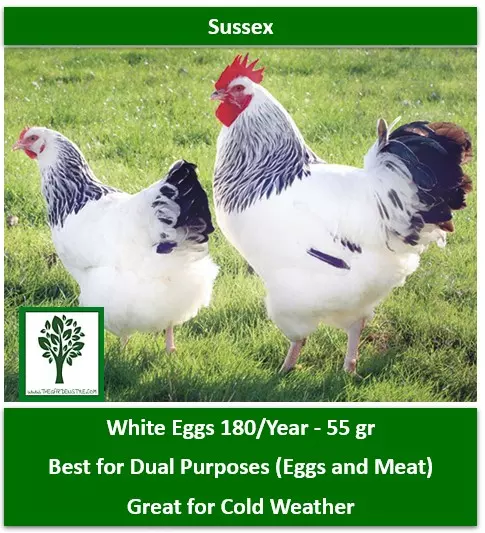
The Sussex hen comes from the English county of the same name, the County of Sussex (England). It is one of the oldest hen breeds in existence.
Sussex is a breed as rustic as it is docile. It normally adopts an upright posture, as if it were alert. It adapts perfectly to any habitat and environment, as the harsh winters are not a problem for it and, for a giant breed, although of medium size, it tolerates the heat quite well. In addition, it is a very good mother and a great incubator, and the growth of its chicks is really fast, except in the tricolor variety, whose development is slower.
The egg laying of the Sussex breed is quite acceptable and is generally higher than that of most other breed hens, averaging about 180 eggs per year. Their eggs are of a good size. They weigh more than 55 grams, with yellow to brown shells.
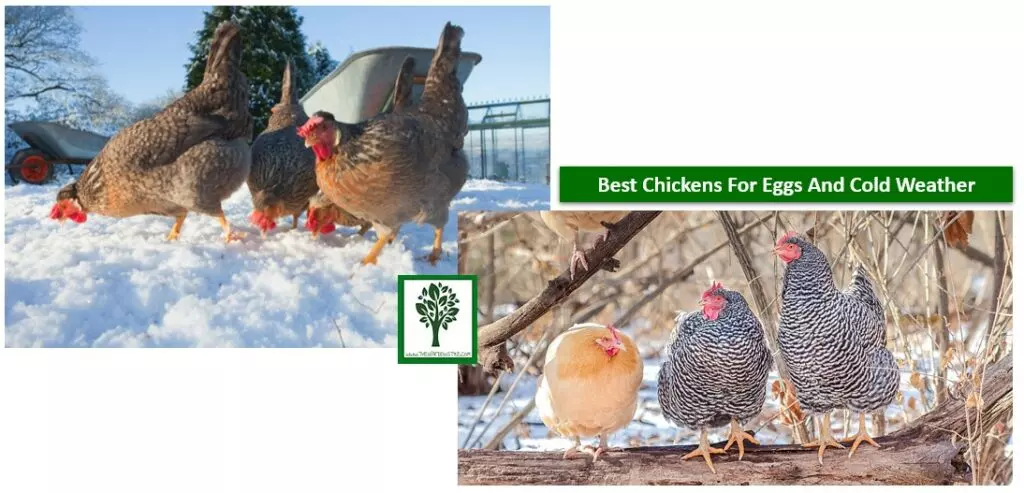
Best Chickens For Eggs And Cold Weather
Chickens tolerate the cold quite well, although there are breeds such as Kikas or dwarf hens that, because of their small body mass, can suffer more from cold weather. Freezing of crests or standing in waterlogged places should be avoided as they get sick with colds and other respiratory problems.
What are the best Hens For Laying Eggs in Cold Weather? Some of the egg-laying breeds that are hearty, and therefore are the Best Chickens For Eggs And Cold Weather are Faverolles, Legbar, Brahma, Cochinchina, Orpington, Sussex (Best Chicken for Egg Laying and Meat), and Wyandotte.
These hen breeds are the most appropriate chicken breeds if you live in a climate where temperatures reach below freezing.
Finally, we recommend that the hens have some shelter when they walk around the aviary, especially if they are free-range hens (cage-free). In this sense, you can plant shrubs that act as windbreaks but do not block the sun’s rays.
Faverolles Hen
The French Faverolles breed, which is very familiar, is noted for its well-developed wattles and sideburns, as well as its feathered tarsi and five toes. The eggs of the Faverolles hen weigh about 55 grams, and the shell is lightly colored brown.
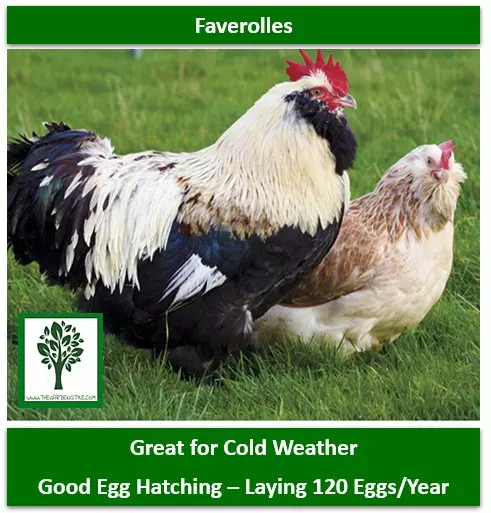
One of the issues to keep in mind is that hens that are more tolerant of cold climates, in general, are more likely to be excellent natural incubators, so they are less dedicated to egg-laying activity.
The Cochin hen (Cochinchina) is one of the largest hen breeds in existence. It is recommended as a natural egg incubator in cold climates, and is docile, and not as good an egg layer. Something similar happens with Brahma hens, which are quite dedicated to incubation and therefore lay fewer eggs.
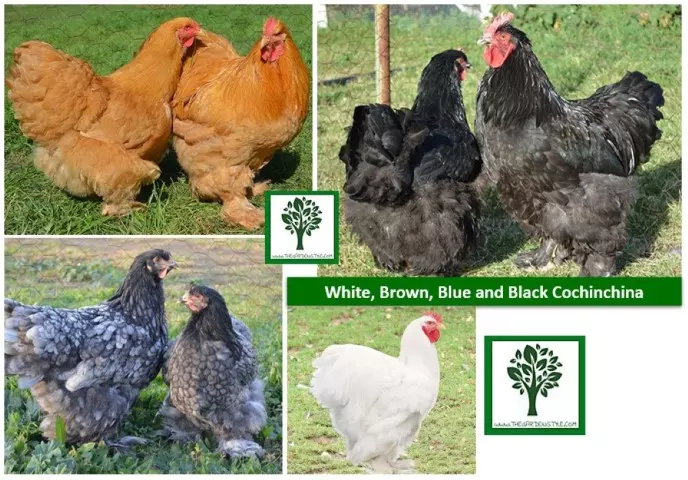
Egg Laying for Beginners: What to Consider?
How many hens per area? Here are 3 important points to consider when starting your egg farm or poultry farming venture, whether for family or business use.
- Make a global scan of the resources, state of your plot, backyard, or the land/space you have available to start raising laying hens. Also check the available services, climate history, vegetation, and fauna in the area you will use for egg production. This will allow you to visualize the dimensions you will use for your future production.
- Calculate the number of hens that is appropriate for your field.
- If the production is cage-free or non-cage-free the calculation will be different. Consider 8 hens/m2 when it is a closed structure, an area of 2 to 4 m2/hen. On the other hand, if cage-free hen production is desired, consider house areas starting from 6 hens/m2 and park areas of about 4m2/hen.
What To Feed Chickens For Best-Tasting Eggs
The feed for your laying hens requires special attention. Feedstuffs for laying hens contain high levels of nutrients in the form of proteins, vitamins, and minerals.
It is easy to see when feeding chicken is not working well. The egg taste is not good and neither is the laying egg rate. So, What To Feed Chickens For Best-Tasting Eggs and Improve the Number of Eggs?
To offer our laying hens a healthy, varied, and balanced diet, it is best to combine the specific balanced feed for them with cereals and add a vitamin supplement. Consider that they also eat slugs, snails, ants, insects, foliage, etc. in your garden.
On the other hand, it is also good to include vegetables or fruit in the diet of our chickens to improve their health, from food leftovers to special preparations that you can give them.
Keep in mind that the nutritional requirements of chickens are not the same as those of a laying hen.
Don’t be tempted by the cheap price of chicken feed bags. This feed is not suitable for laying hens. Think of it this way, you didn’t choose a laying breed and then not feed it properly and it lays few eggs, just like any other hen.
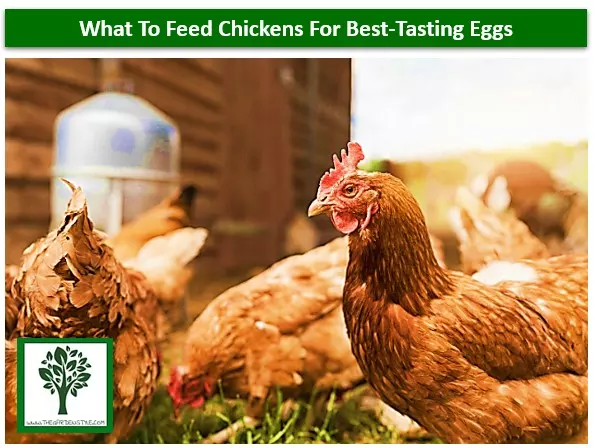
Feedstuffs Balanced Feed For Laying Hens
It is important to provide all the necessary nutrients to this type of hen, which is the most nutritionally demanding due to the high quantity of eggs they produce (approximately 1 per day).
Specific balanced feed for laying hens contains that extra necessary for your hens to maintain their clutches and not affect their performance. In this way, their health will not suffer and neither will the number and quantity of eggs.
Types of Feed for Hens For Laying Eggs and Best-Tasting Eggs
Types of Feed for hens: the texture can be either cracked, crumbled, or pelleted. The cracked feed means that the feed has pieces of cereal and the seed so that the hens can peck at it on demand.
Bear in mind that the dietary needs of chicks differ from those of laying hens. Purina Layena is a great option for a nutritionally complete layer hen crumbled feed. CountryMax Hen Egg Layer Pellet 16% Chicken Feed is a pelleted feed for Hens For Laying Eggs.
On the other hand, the pelleted texture will make it easier for the hens to be satiated sooner and will also allow you to better understand the feed intake of your animals. With the pelleted feed, you will get the best feed for your laying hens.
The components of feed for high-yield laying hens usually contain corn, soybean meal, wheat, calcium carbonate, phosphate, soybean oil, sea salt, and sodium carbonate. It may also contain some multivitamins such as vitamin A, vitamin E, trace elements, added proteins, and minerals which are very necessary due to their high egg production rate.
How Much Does An Egg Laying Hen Eat Per Day?
Hens For Laying Eggs: How Much Does An Egg Laying Hen Eat Per Day? Although it depends on the breed of laying hen, climate, and activity (cage-free/not cage-free), you should estimate that each hen eats about 100-125 grams per day along with clean drinking water.
To feed your laying hens you can make use of a feeder to help you measure the rations. Keep in mind as mentioned in previous paragraphs that they also eat other foods, from insects to fruits and vegetables, and that this enriches the diet considerably.
Recommended Post How Many Eggs Per Day Do Chickens Lay and For How Long
Final Conclusion the Best Hens For Laying Eggs and Best-Tasting Eggs
If you are one of those people who are currently wondering why eggs have become so expensive and are starting to think about having a couple of laying hens in your backyard, you probably found it very useful this article already helps to understand what are the breeds of hens that we will choose over others if our goal is to raise chickens for eggs.
Undoubtedly having chickens or hens for laying eggs is an activity that is very educational and encouraging of responsibility for children, so it is also possible to think about having hens of different breeds and enjoy both a good amount of eggs and also appreciate the natural incubation if we choose a hen more dedicated to hatching as the Brahma hen.
Purchasing a green egg-laying hen such as the Cream Legbar is also a very satisfying and noticeable experience.
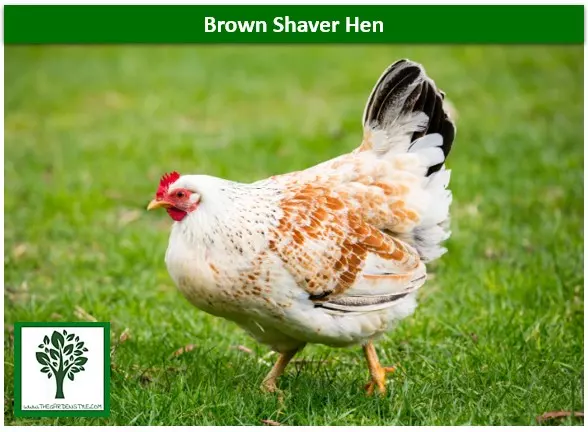
Whether you are looking for large white eggs like the Leghorn hen or brown eggs like the Isa Brown hen, the choice and mix of different breeds of hens in the aviary is entirely up to you and the breeds you can find available, or get from specific suppliers.
On the other hand, whether you are interested in keeping hens free-range (also called happy hens) or not free-range, proper feeding that meets the nutritional requirements of laying hens is essential to obtain an adequate quantity of eggs according to their species and best-tasting eggs.
The nutritional content of eggs and the preservation of quality are significantly impacted by changes and modifications to laying hen diets. These dietary adjustments may increase the quantities of fatty acids and pigments while lowering the levels of bad cholesterol in eggs (2022 Scientific Article, Advanced Practical Strategies to Enhance Table Egg Production)
Stress due to heat, lack of nutrients or water causes a considerable decrease in the number of eggs laid by these hens.


